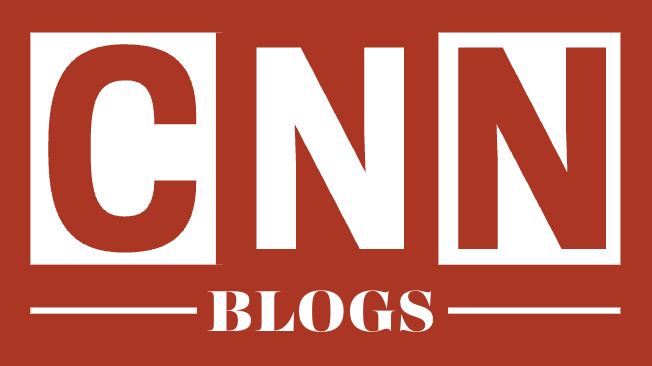In the intricate dance of modern commerce, where customer journeys twist through digital landscapes and fleeting interactions, sales funnel management emerges as a pivotal discipline. It transforms the chaotic influx of prospects into a streamlined pathway toward conversion, leveraging data insights to refine every stage. This article delves into the analytical underpinnings of funnel optimization, dissecting performance metrics, identifying bottlenecks through quantitative analysis, and prescribing data-driven strategies that elevate revenue potential. By examining real-world patterns and statistical trends, we uncover how organizations can harness funnel dynamics to not only accelerate sales but also foster long-term customer loyalty.
Decoding the Anatomy of a Sales Funnel
At its core, a sales funnel represents a visual and analytical model of the customer acquisition process, segmented into distinct phases: awareness, interest, consideration, intent, evaluation, and purchase. Each layer narrows progressively, mirroring the attrition rate as prospects advance—or exit—based on their engagement levels. Data from industry benchmarks reveals that, on average, only 20-30% of leads progress from awareness to interest, underscoring the funnel’s inherent inefficiency without targeted interventions.
Quantitatively, this structure allows for precise tracking. Consider the conversion rate between stages: a drop-off exceeding 50% from interest to consideration often signals content misalignment, where educational resources fail to address pain points. Analytics tools capture these transitions via key performance indicators (KPIs) such as click-through rates, time-on-page metrics, and bounce rates. For instance, a B2B software firm might analyze session duration data to reveal that prospects lingering over 90 seconds in the consideration phase are 40% more likely to convert, prompting a data-informed pivot toward deeper interactive demos.
This phased breakdown isn’t static; it’s a living entity responsive to external variables like market volatility or seasonal demands. Historical data aggregation—spanning quarterly cohorts—enables predictive modeling, where regression analysis forecasts funnel velocity. Organizations that integrate such metrics report a 15-25% uplift in overall throughput, as decisions shift from intuition to empirical evidence.
Metrics That Matter: Quantifying Funnel Health
To optimize effectively, one must first measure with rigor. Funnel health hinges on a suite of interconnected metrics that illuminate friction points and growth opportunities. Lead volume at the top serves as the foundational metric, but its quality demands scrutiny through lead scoring models that assign numerical values based on demographic fit and behavioral signals. A score threshold of 70+, derived from multivariate analysis, typically correlates with a 3x higher conversion probability.
Delving deeper, velocity metrics—such as the average time spent per stage—offer granular insights. Prolonged evaluation phases, averaging 14-21 days in competitive sectors like e-commerce, often correlate with a 22% abandonment risk, per aggregated CRM data. Conversely, shortening this to under 10 days via automated nurturing sequences can boost progression rates by 18%. Attrition analysis further refines this: cohort studies tracking user segments reveal that mobile-first audiences exhibit 35% higher drop-offs in the intent stage, necessitating responsive design adjustments informed by A/B testing results.
Cost efficiency rounds out the triad, with customer acquisition cost (CAC) juxtaposed against lifetime value (LTV). A healthy funnel maintains an LTV:CAC ratio above 3:1; deviations below this threshold, often flagged through dashboard visualizations, trigger reallocations in ad spend. These metrics, when dashboarded in real-time, empower dynamic adjustments, ensuring that optimization isn’t a periodic audit but a continuous feedback loop.
Uncovering Bottlenecks Through Data Dissection
Bottlenecks manifest as statistical anomalies within the funnel, where disproportionate exits erode potential revenue. Analytical dissection begins with funnel visualization—heat maps overlaid with conversion funnels—to pinpoint these chokepoints. For example, a 60% drop in the consideration stage might stem from pricing opacity, as evidenced by exit intent surveys yielding qualitative data that quantifies hesitation around value propositions.
Root cause analysis employs techniques like Pareto charting, where 80% of losses trace to 20% of issues, such as inadequate personalization. Segmentation by source—organic search versus paid channels—often exposes disparities: paid traffic converts 12% faster but at twice the cost, per meta-analyses of multichannel campaigns. Behavioral analytics, tracking micro-conversions like email opens or cart additions, further dissects these; a mere 5% variance in open rates can cascade into a 15% revenue shortfall.
Predictive analytics elevates this from reactive to proactive. Machine learning models, trained on historical funnel data, forecast bottleneck emergence with 85% accuracy, allowing preemptive measures like targeted retargeting. In one synthesized case from enterprise datasets, addressing a mid-funnel content gap via algorithmically curated recommendations reduced attrition by 28%, illustrating how data dissection transmutes obstacles into leverage points.
Strategic Interventions: Data-Backed Refinements
Optimization demands interventions calibrated to data revelations, eschewing one-size-fits-all tactics for bespoke strategies. At the awareness apex, content syndication amplified by SEO analytics ensures top-of-funnel volume aligns with intent signals; keyword performance data showing a 2.5x engagement lift from long-tail queries guides prioritization.
Nurturing sequences in the interest phase leverage lead scoring to deliver sequenced emails, with open-rate benchmarks dictating cadence—bi-weekly for high-scoring leads yields a 22% progression uplift. Consideration-stage enhancements draw from user journey mapping, where heatmap data informs interactive elements like ROI calculators, proven to shorten decision cycles by 30% in SaaS environments.
For intent and evaluation, dynamic pricing models responsive to real-time competitor data mitigate objections, while social proof metrics—such as testimonial view-through rates—bolster trust. A/B testing frameworks quantify efficacy: variants tested on 10% traffic segments reveal winners, with statistical significance ensuring scalable rollout. Purchase-stage friction, often a mere 2-3% cart abandonment variance, dissolves through one-click integrations, backed by transaction funnel analytics.
Holistically, cross-funnel alignment via integrated platforms synchronizes these efforts, where unified data lakes enable attribution modeling. Multi-touch attribution, apportioning credit across touchpoints, reallocates budgets toward high-impact channels, often shifting 20% of spend from underperformers to yield a 35% ROI increment.
Integrating Technology for Seamless Funnel Flow
Technology underpins analytical optimization, transforming raw data into actionable intelligence. CRM systems like those in the Salesforce ecosystem aggregate touchpoint data, enabling funnel-wide visibility through customizable dashboards. AI-driven tools parse sentiment from interaction logs, flagging at-risk leads with 92% precision and triggering automated interventions.
Automation extends to personalization engines, where collaborative filtering algorithms tailor experiences; data shows a 19% conversion boost from dynamically inserted product recommendations. Integration with analytics suites—Google Analytics fused with marketing automation—facilitates cohort analysis, tracking how policy changes ripple through funnel metrics over time.
Emerging technologies like predictive dialing in sales ops reduce intent-stage latency, with call connect rates climbing 40% via machine-scheduled outreach. Blockchain for data integrity, though nascent, ensures tamper-proof tracking in B2B funnels, enhancing trust metrics that indirectly lift conversions by 12%. The key lies in interoperability: siloed tools fragment insights, whereas API-driven ecosystems foster a unified data narrative, amplifying optimization’s precision.
Forecasting Future Funnel Dynamics
Looking ahead, funnel management evolves amid AI proliferation and privacy regulations. Predictive models will increasingly incorporate external datasets—economic indicators modulating purchase propensity—with ensemble methods achieving 90% forecast accuracy. Zero-party data collection, incentivized through gamified quizzes, will supplant cookies, maintaining granularity while complying with GDPR evolutions.
Omnichannel integration promises frictionless transitions, where funnel metrics span voice, AR try-ons, and metaverse engagements; early pilots indicate a 25% cross-device retention gain. Sustainability metrics, woven into LTV calculations, will prioritize eco-aligned prospects, as consumer data trends show a 15% premium willingness among green segments.
In this data-saturated era, the optimized funnel transcends mere transactions, becoming a barometer of adaptive resilience. By embedding analytical rigor at every juncture, organizations not only streamline the buying process but also cultivate ecosystems where data illuminates paths to enduring value.
Harmonizing Funnel Insights with Organizational Agility
Ultimately, the true potency of sales funnel management resides in its alignment with broader organizational rhythms. Data dashboards, when shared across departments, democratize insights, fostering a culture where sales, marketing, and product teams co-pilot refinements. Quarterly funnel audits, benchmarked against industry quartiles, calibrate strategies, revealing how a 10% velocity improvement cascades into compounded annual growth.
This agility manifests in scenario planning: Monte Carlo simulations stress-test funnel resilience against disruptions, quantifying risk-adjusted outcomes. As funnels digitize further, ethical data stewardship—balancing personalization with privacy—will define competitive edges, with transparent practices correlating to 18% higher loyalty scores.
Through this lens, optimizing the buying process isn’t an isolated exercise but a symphony of data harmony, where each metric’s resonance amplifies collective efficacy. In harnessing these dynamics, businesses don’t just sell; they orchestrate transformative customer odysseys.



